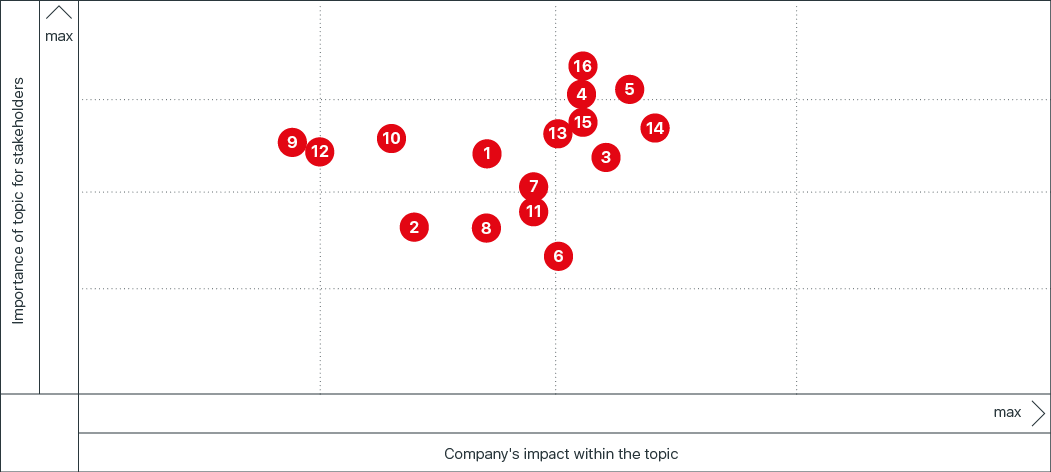Materiality Matrix
102-46
The material topics were identified and ranked in two stages. During the first stage, significant and material topics that were highlighted last year were analysed, and a critical assessment was conducted of the relevance of these topics in the current reporting period. There were no major changes to the list of topics, although some have been merged and expanded. The topics that were selected equally reveal the Company’s economic, environmental, and social impact in accordance with the guidelines of the Global Reporting Initiative Standards.
During the second stage, the material topics were ranked. In order to determine the significance of the topics for stakeholders, a survey of internal (employees) and external stakeholders was conducted using questionnaires in electronic and hard copy formats. To determine the Company’s impact within each topic, representatives of the Company’s senior management were surveyed. A total of 80 people took part in the survey.
Of the 16 topics selected for disclosure, the following had the highest priority based on the results of the ranking:
- personnel management, training, and motivation;
- customer focus and quality control;
- economic performance;
- human rights;
- engagement with local communities;
- occupational health and safety;
- innovation and operational (eco) efficiency.
102-49
A comparison of the current materiality matrix with last year’s results showed that the key difference was the growing interest among stakeholders in respecting human rights, maintaining customer focus and quality control, and introducing innovations in the Company’s activities. Meanwhile, the high level of materiality of the Company’s economic performance, personnel management, workplace safety, and attention to the regions where it operates remained unchanged.

- Business ethics, anti-corruption, and legal compliance
- Sustainable supply chain
- Innovation and operational (eco) efficiency
- Economic performance
- Customer focus and quality control
- Energy consumption and efficiency
- Water consumption and wastewater discharge
- Sustainable use of resources
- Climate strategy and air emissions
- Waste management and waste reduction initiatives
- Compliance with environmental legislation
- Maintaining biodiversity and environmental measures
- Engagement with local communities
- Occupational health and safety
- Human rights
- Personnel management, training, and motivation






